Through AI-driven no-code tools, Portals enables everyone to create perpetually existing game worlds and tradable assets.
Written by: Deep Tide TechFlow
On September 16, a noteworthy project emerged in the Solana ecosystem.
Previously interpreted by various parties as the "Web3 version of Roblox," the creator platform Portals completed the TGE of its native token $PORTALS, officially landing on mainstream exchanges such as Bybit, Gate, and KuCoin.
As early as August 8, the project's presale was astonishingly successful, selling out in 11 seconds with 3700 SOL instantly consumed.
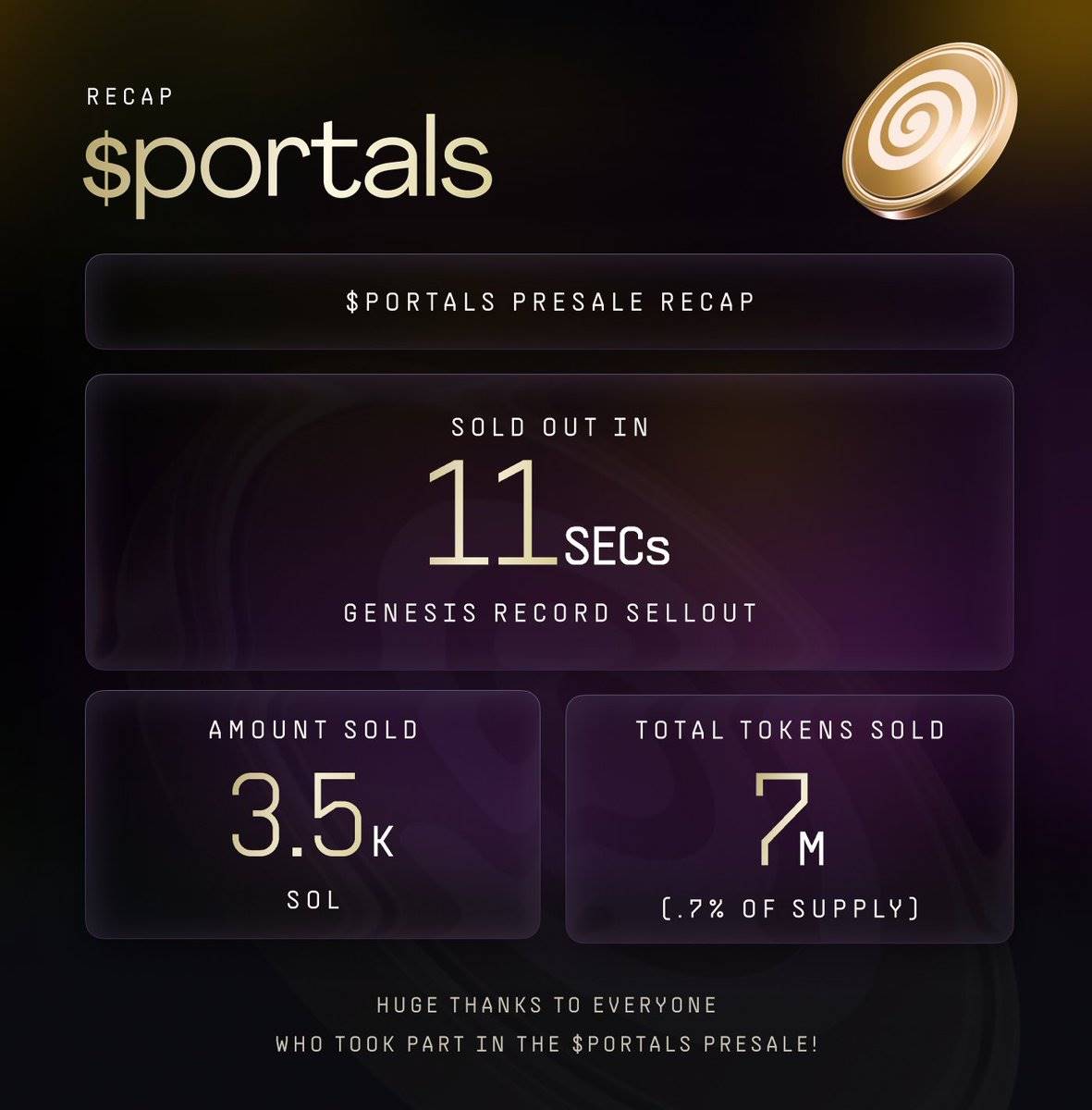
According to market data, the current FDV of $PORTALS is around $150 million, reflecting an increase of about 1.5 times compared to its presale valuation of $100 million. This means that even after experiencing the common post-TGE airdrop selling pressure and market fluctuations, early participants are still in profit.
This inevitably brings to mind another phenomenal project, Virtuals Protocol. As an AI agent issuance platform on the Base chain, Virtuals once surpassed a market cap of $2 billion within just a few months due to its innovative token issuance mechanism, and the AI agent tokens within its ecosystem generated significant wealth effects.
Portals, however, seems to have even greater ambitions.
It aims not only to create AI agents and issue tokens but also to build a complete ecosystem for game creation and distribution, deeply integrating the token issuance model of Virtuals with the UGC model of Roblox.
If you're feeling puzzled, consider what narratives in the current crypto market still have the potential to thrive?
Among many answers, one cannot overlook the evergreen AI and the recently emerging CCM (Creator Capital Market), the creator capital market.
If Pump.fun's live token proved the market's demand for zero-threshold creation tools, it also exposed the fatal flaw of "streamers returning to zero once they go offline." In contrast, Portals has chosen a completely different path:
Through AI-driven no-code tools, enabling everyone to create perpetually existing game worlds and tradable assets.
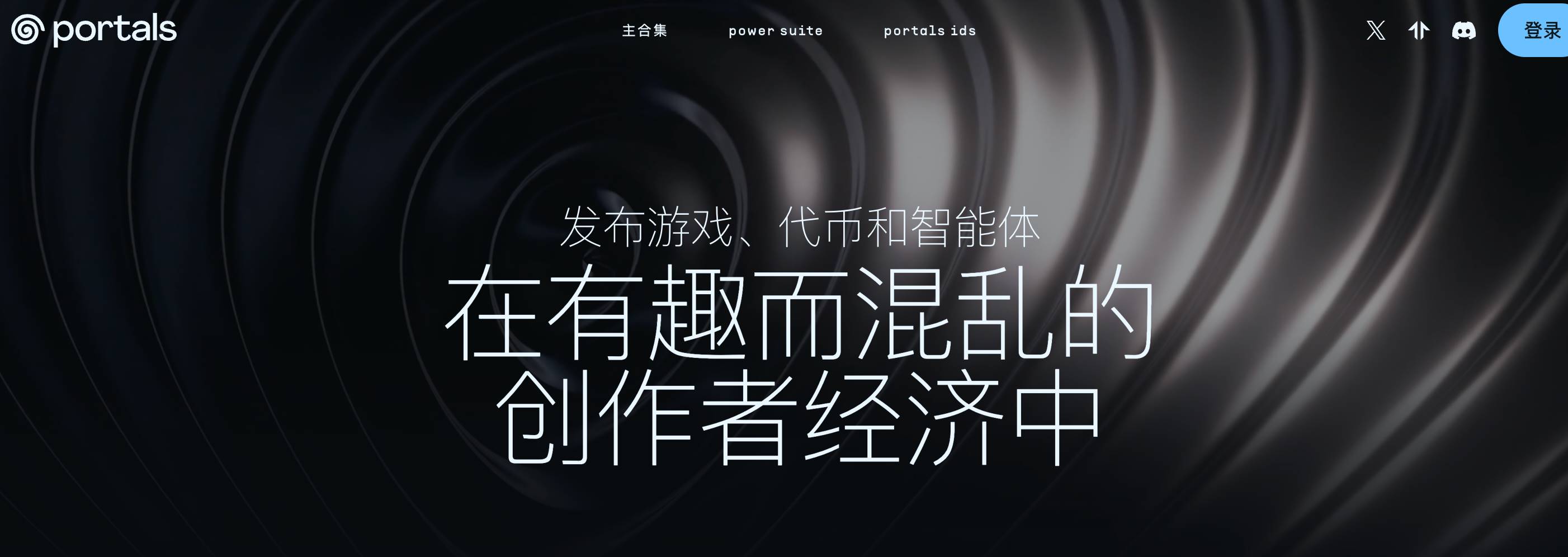
The Solana ecosystem is at a special juncture. According to DeFiLlama data, the TVL on the Solana chain has surpassed $8 billion, with daily active addresses exceeding 5 million. However, compared to the prosperity of DeFi, its entertainment and creator economy sectors remain relatively blank.
Although there are over 40 game projects on-chain, there is a lack of infrastructure that allows ordinary users to easily create and issue game assets.
More importantly, the paradigm of the creator economy is undergoing a fundamental transformation.
From short videos to live streaming, from NFTs to AI agents, every technological innovation in the crypto world is lowering the barriers to creation and expanding monetization opportunities for creators. Yet, the creation of games, as the most immersive and economically potent form of content, has always had a prohibitively high barrier until the maturity of AI and no-code tools.
The emergence of Portals coincides perfectly with this critical juncture:
AI technology is mature, Solana's performance is sufficient, the creator economy is exploding, and Virtuals has validated the feasibility of the model. With all elements in place, is a new giant in the creator economy about to be born?
Project Background and Market Recognition
To understand Portals, one must first grasp the composition of its team and investors.
On the team side, according to official information, the core founding team of Portals has a track record of continuous entrepreneurship, with three previous projects achieving over $1 million in revenue in their first year.
Team members have backgrounds in the gaming industry, having developed or published well-known games such as "League of Legends," "Batman: Arkham Asylum," and "Saints Row." They have served companies like Riot Games, Blizzard, and Disney. Additionally, the team has accumulated experience operating 40,000 Twitch streamers in their previous project.
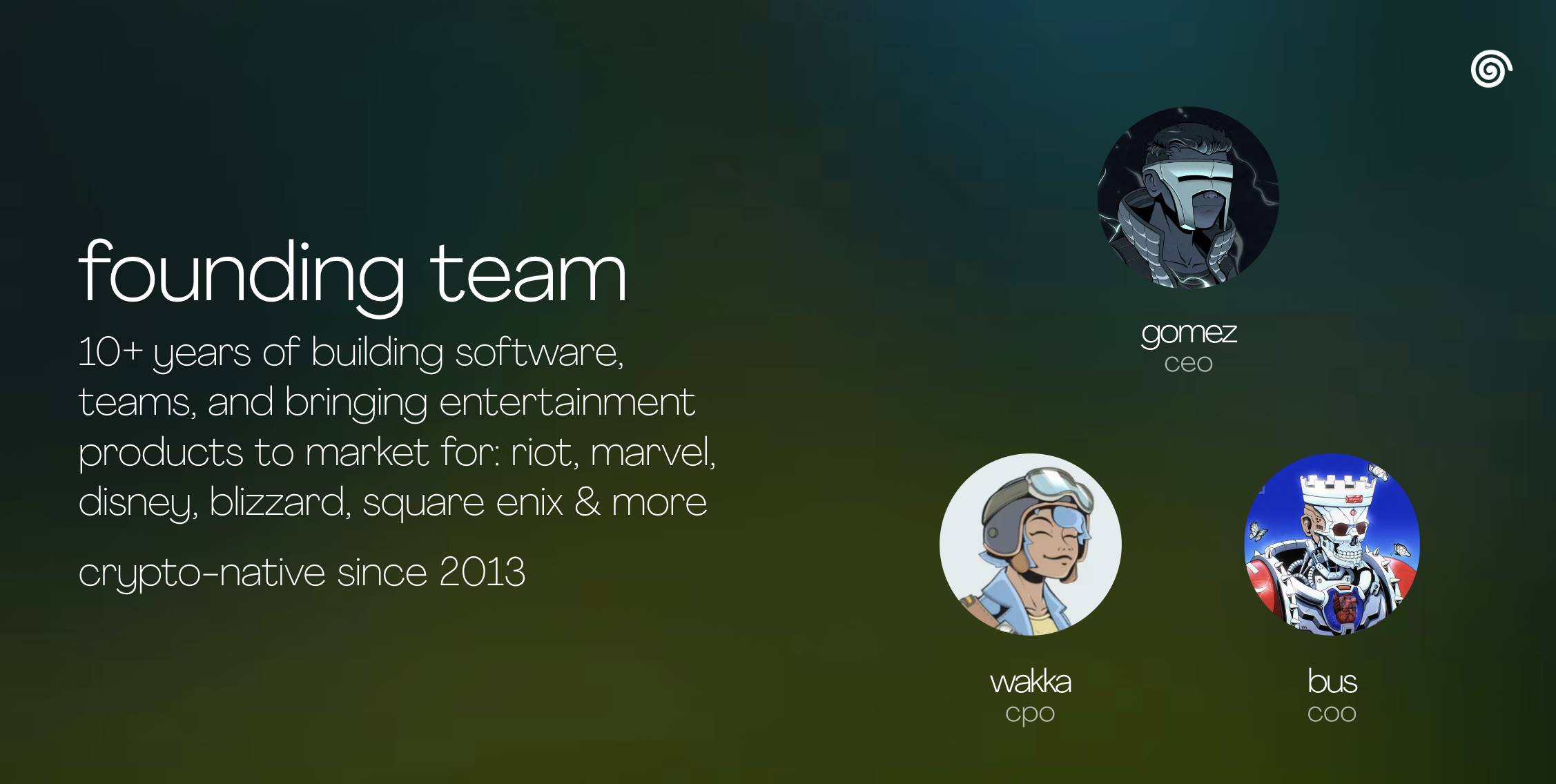
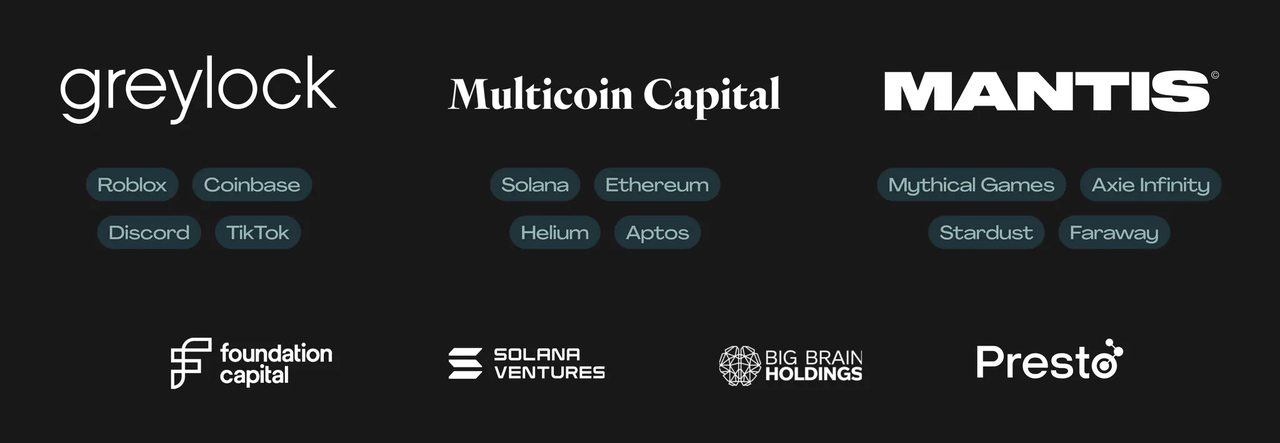
In terms of capital composition, Portals completed a $5 million seed round of financing in February 2022. The lead investor, Greylock, has a portfolio that includes platform products like Roblox, Coinbase, and Discord. Other investors include Multicoin Capital, Solana Ventures, Foundation Capital, Mantis VC, and Twitch co-founder Justin Kan.
The characteristic of this investment lineup spans three key areas: gaming (Greylock has invested in Roblox), Web3 infrastructure (Multicoin is deeply involved in Solana), and the creator economy (Justin Kan founded Twitch).
The early results of ecosystem building are also noteworthy. Unlike many Web3 projects that "issue tokens first and then do things," Portals chose the path of building the ecosystem before conducting the TGE.
As early as November 2021, Portals issued its genesis NFT series, which is not just a PFP project but also serves as the "founding membership certificate" of the entire Portals ecosystem. Holders gained early access to the platform, game testing qualifications, and subsequent token airdrop rights.
This NFT series is divided into four rarity levels—Explorers, Collectors, Striders, and Operators—each corresponding to different rights and scarcity.
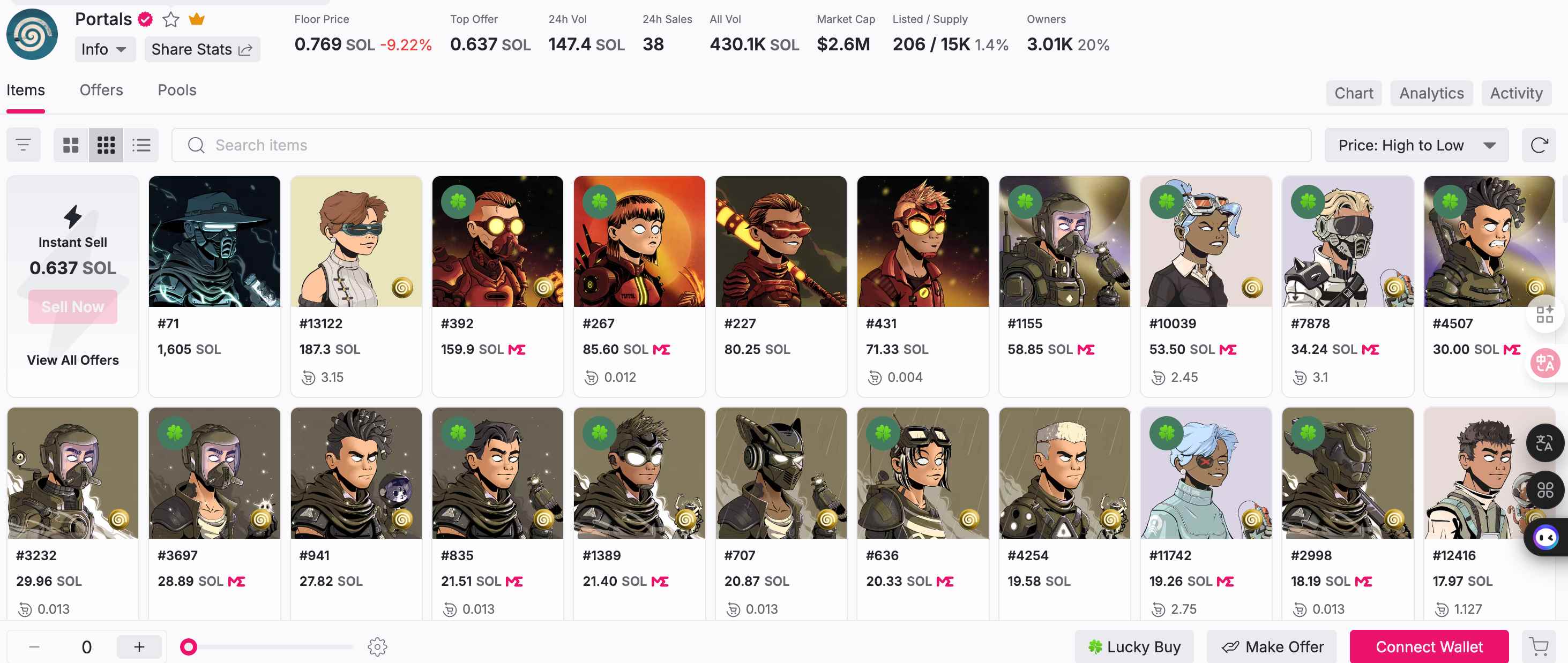
After nearly three years of development, this NFT series has become the second-largest game NFT project by market cap in the Solana ecosystem. Notably, just before the TGE, there was a case of a single buyer spending over $1 million to sweep up rare NFTs, reflecting market recognition of Portals' long-term value.
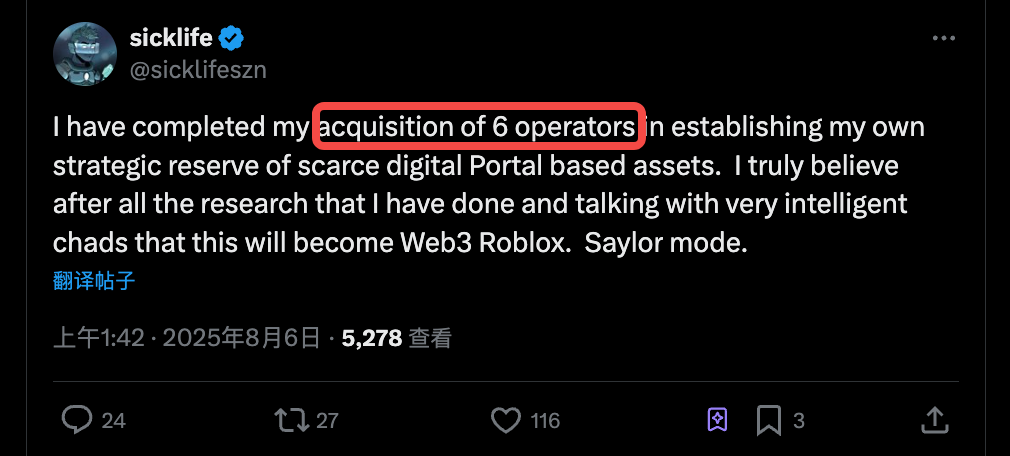
The most telling indicator of market enthusiasm was the presale performance on August 8: 7 million tokens (only 0.7% of the total supply) were snapped up in 11 seconds for 3700 SOL, corresponding to a fully diluted valuation of $90 million. This speed is rare even in a bull market.
From Creation to Distribution: The Game Creation Universe in the Browser
If one were to summarize the product characteristics of Portals in one sentence, it would be: “Making game creation as easy as posting a video, and game assets as freely tradable as issuing tokens.”
The Portals team understands how crucial it is for creators to have user-friendly and low-threshold creation tools. Based on this, Portals' technical architecture achieves truly no-threshold game creation.
- No downloads required, just open and use
Opening Portals' official website reveals that, unlike traditional game engines that often require several gigabytes of downloads, Portals operates 100% in the browser. This means creators do not need to download any client and can start creating simply by opening a webpage. More importantly, players also do not need to download anything; they can click to play games that interest them.
According to platform data, this "zero friction" experience has increased the conversion rate of games several times compared to traditional downloadable games.
Imagine this scenario: a streamer showcases a game they created during a live stream, and viewers can join the game immediately by clicking a link, without leaving the live stream to download anything. This immediacy is key to Portals' rapid dissemination.
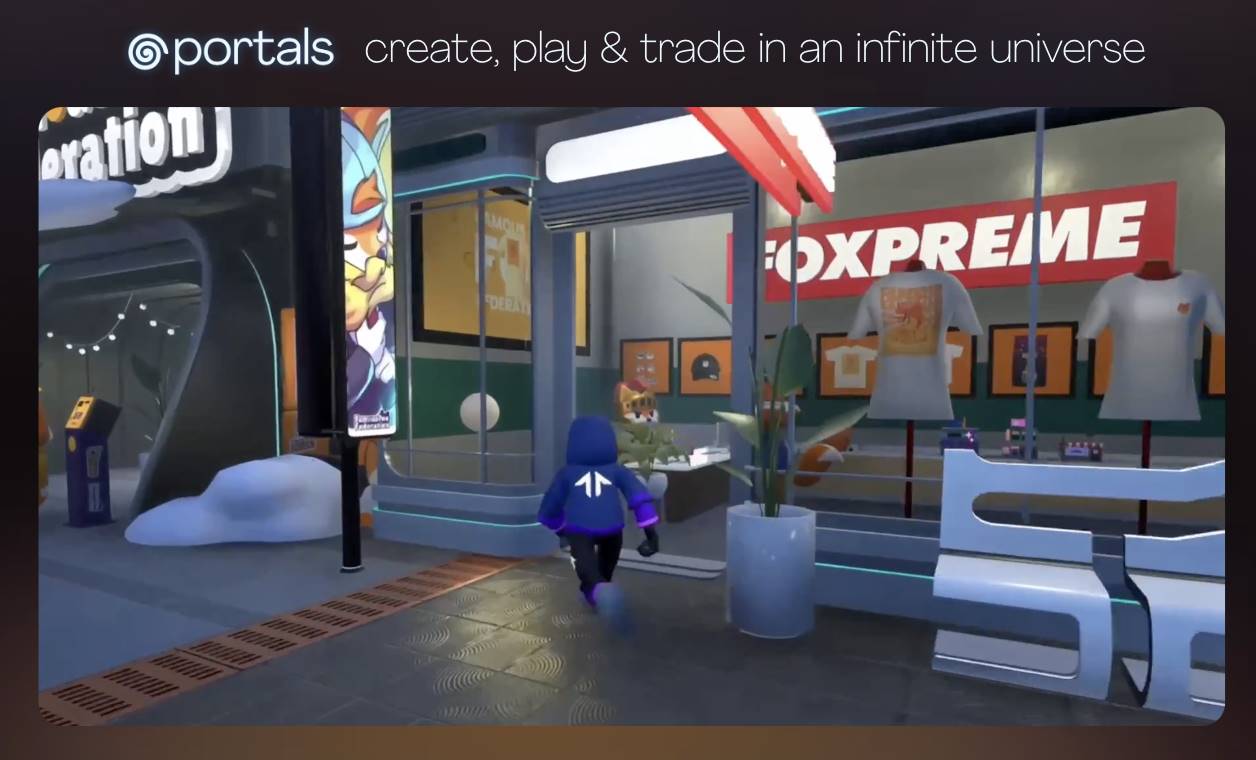
- Drag-and-drop creation, everyone is a game designer
Portals Studio offers over 20 pre-made components covering the core elements of game development:
Such as character systems (NPCs, player characters, enemies), interaction mechanisms (triggers, portals, mechanisms), game logic (quest systems, leaderboards, reward mechanisms), and environmental elements (terrain, buildings, decorations). All these components can be used through simple drag-and-drop and parameter adjustments.
Creators can also import their own 3D models and materials for more personalized creations. Interestingly, Portals supports real-time collaboration, allowing you to invite friends to create games together, just like collaborating on a document in Google Docs.
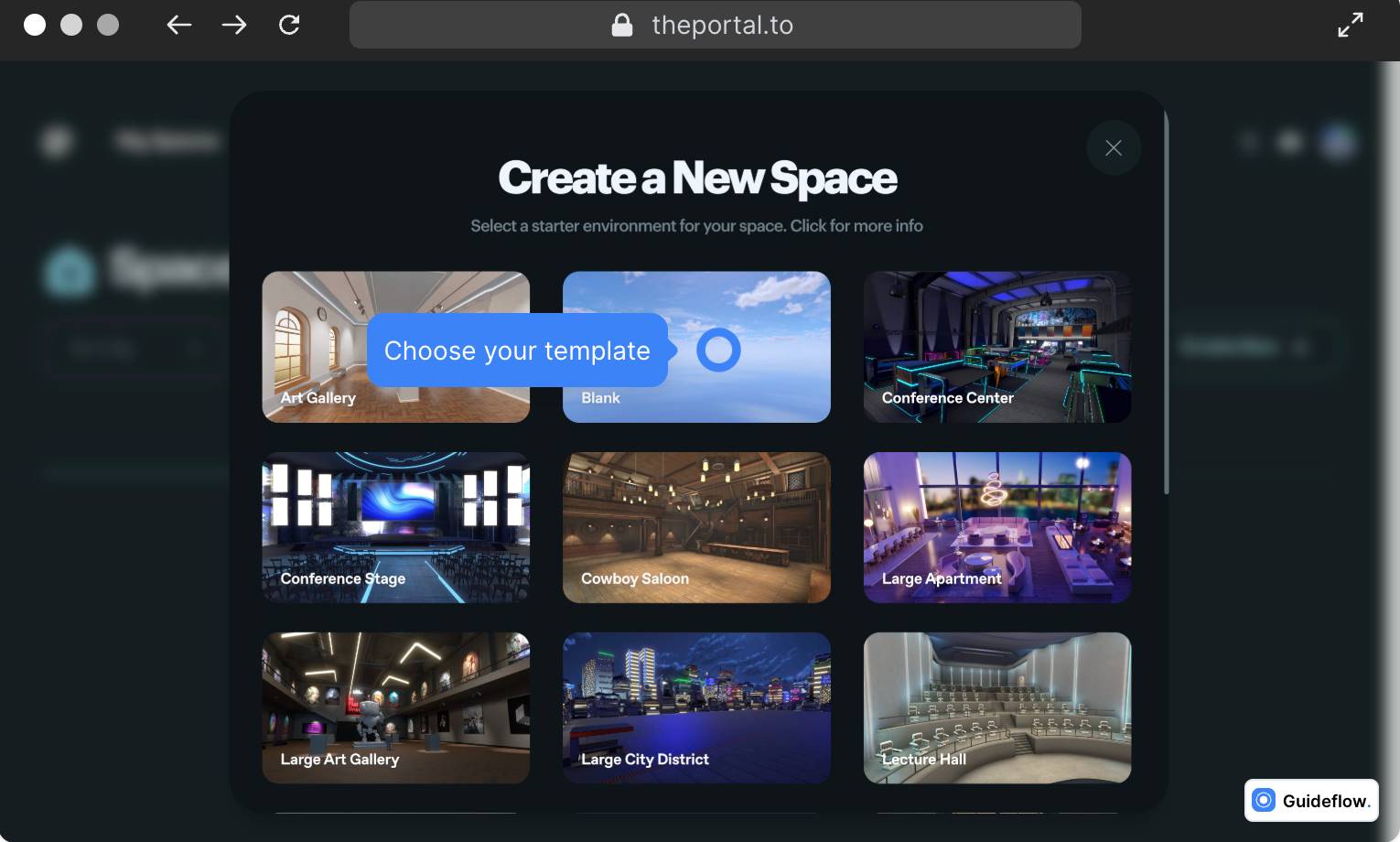
- Real experience: From concept to launch in just a few hours
Taking the popular game "The Doll Maker" on the platform as an example, it feels like a highly atmospheric puzzle adventure game. The lighting, sound effects, and in-game interaction experiences are all quite good, and everyone can click on its official website to play directly.
From the game's background introduction, the creator used Portals Studio to complete the entire process from concept to launch in just one weekend. The game includes carefully designed puzzles, atmospheric sound effects, and multiple scene transitions, giving it the feel of an independent studio production.
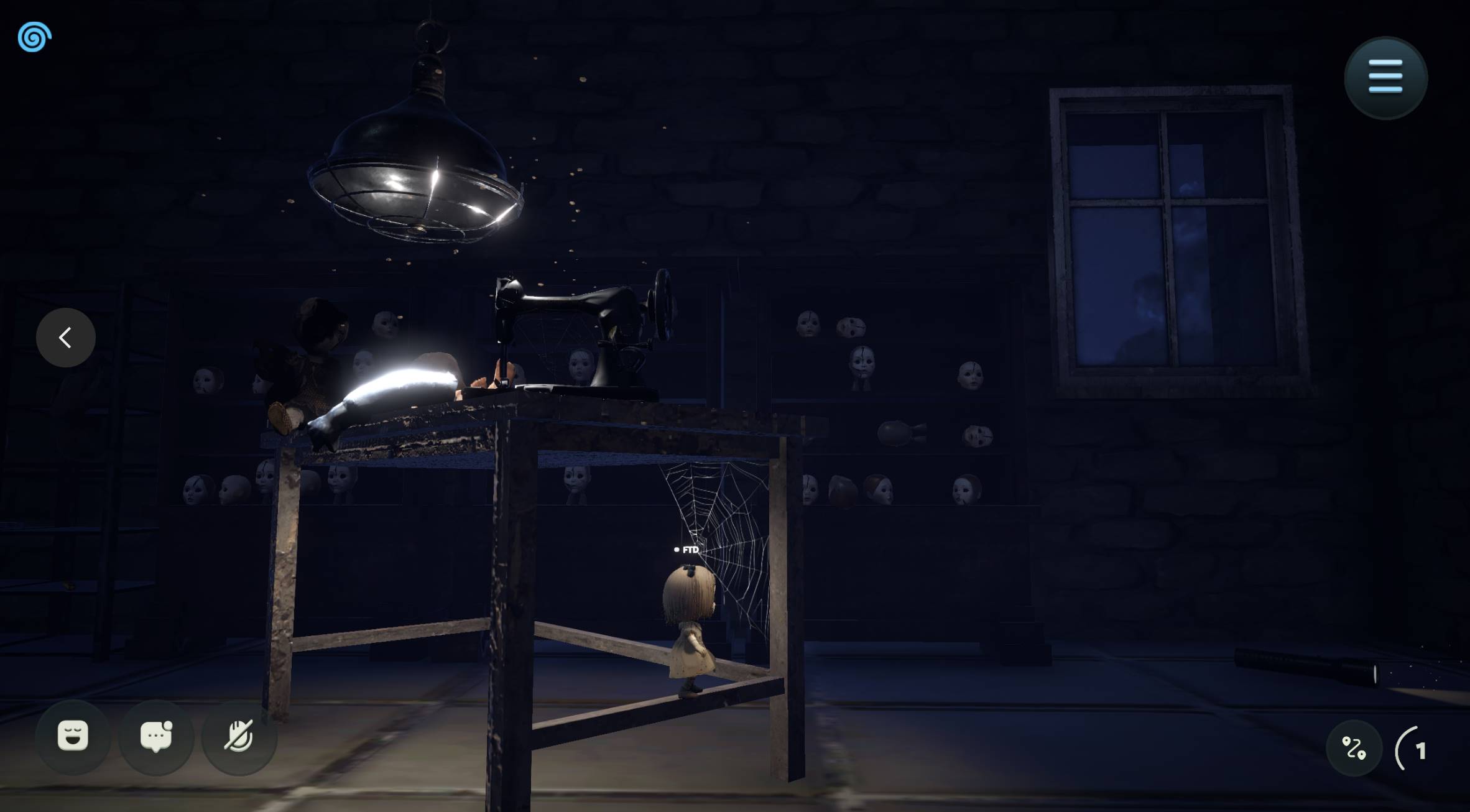
In addition to Dollmaker, Game Jam has produced a variety of game works, including various types such as parkour, shooting, and role-playing, fully demonstrating the practicality of Portals tools. These games can currently be played directly on the Portals platform without any downloads.
In addition to user-friendly game creation tools and asset issuance infrastructure, Portals has also designed features for content distribution, supporting game creators in using AI tools to automatically promote game content across various social platforms for viral dissemination.
- Asset Issuance: From Games to Economic Systems
In the world of Portals, every game can potentially become an independent economy. This may sound a bit grandiose, but Portals simplifies this process remarkably.
Creators can easily issue tokens for their games, just like issuing tokens on Pump.fun, but the difference is that these tokens are backed by real game scenarios and usage demands.
To understand Portals' economic model, the best way is to look at the case of CHRONO.
As the first game token on the platform, the birth of CHRONO is quite interesting: it did not follow the traditional presale route but was directly airdropped to active users in the Solana community.

Even more interesting is the design of the in-game economic cycle. In the first game supporting $CHRONO, players can earn token rewards by completing tasks, but they also need to spend tokens to unlock new levels or purchase items.
Data shows that the game issued 36 million tokens but recycled 39.6 million tokens through various game mechanisms, achieving natural deflation. This "play-and-consume" model makes tokens not just speculative tools but part of the gaming experience.
Now, CHRONO is no longer limited to a single game. Community developers are creating 5-10 new games, all using CHRONO as a universal currency. Imagine earning tokens in Game A that can be used to buy equipment in Game B, and then staking them in Game C for returns—this is the cross-game economic network that Portals aims to build.
Of course, we must also recognize that game tokenization is not without controversy.
Price fluctuations can affect game balance, and speculators may disrupt the game ecosystem. However, Portals' current approach seems to allow the market to validate this. Creators can choose whether to issue tokens, and players can choose whether to participate.
The platform provides tools but does not enforce pathways.
This openness is the essential difference between Portals and traditional gaming platforms. Here, creators are not just content producers; they can also become designers of economic systems, aligning with the recent hot narrative of the Creator Capital Market, which monetizes the attention that creators can attract.
And all of this can be accomplished through drag-and-drop and clicks, without writing a single line of code.
- AI Empowerment: Full-Chain Support from Creation to Dissemination
If no-code tools lower the technical barriers to game creation, then the addition of AI gives creators wings at the creative level. The AI features integrated into Portals span the entire process from creation to dissemination.
According to the platform, Portals provides powerful generative AI tools that can automatically convert game content into short videos for promoting games, AI agents, or token projects on social media.
The significance of this feature lies in solving a core pain point for creators: many people can create interesting games but are not good at marketing and promotion. By automatically generating short video content suitable for platforms like TikTok and YouTube Shorts, creators can focus on game creation itself while letting AI handle content distribution.
Combined with Portals' browser-play feature, this forms an efficient conversion funnel: users see game videos on social media, click the link, and can immediately play the game without downloading anything.
$PORTALS: More Than Just a Governance Token
With the completion of the TGE on September 16, PORTALS officially entered market circulation.
The core functions of the token revolve around various aspects of the platform ecosystem. First is the most direct pairing mechanism: every game token issued on Portals will automatically establish a liquidity pool with PORTALS, meaning PORTALS will become the "base currency" of the entire ecosystem.
As more game tokens are issued, the liquidity demand for $PORTALS will continue to grow.
Secondly, there are rights functions. Users holding PORTALS can receive airdrop rights for new game tokens, similar to how holders of VIRTUAL in the Virtuals ecosystem receive new AI agent tokens.
Considering that multiple AI agent projects with market caps in the tens of millions of dollars have already emerged on Virtuals, the value of these airdrop rights should not be underestimated.
The staking mechanism provides another layer of value support. The 10% transaction fee collected by the platform will be used to repurchase $PORTALS and distribute it to stakers. This is not a simple "mining" process but allows token holders to genuinely share in the platform's growth dividends. As the platform's trading volume increases, staking rewards will also rise accordingly.
But the most interesting aspect is the creator incentive program. Of the total supply of 1 billion tokens, 370 million tokens (37%) are allocated for community and ecosystem development. These tokens will not be released all at once but will be gradually distributed over 3-5 years through "creation rewards," "game ranking competition prizes," "quality content incentives," and other means. This means that outstanding creators can earn substantial token rewards through continuous creation.
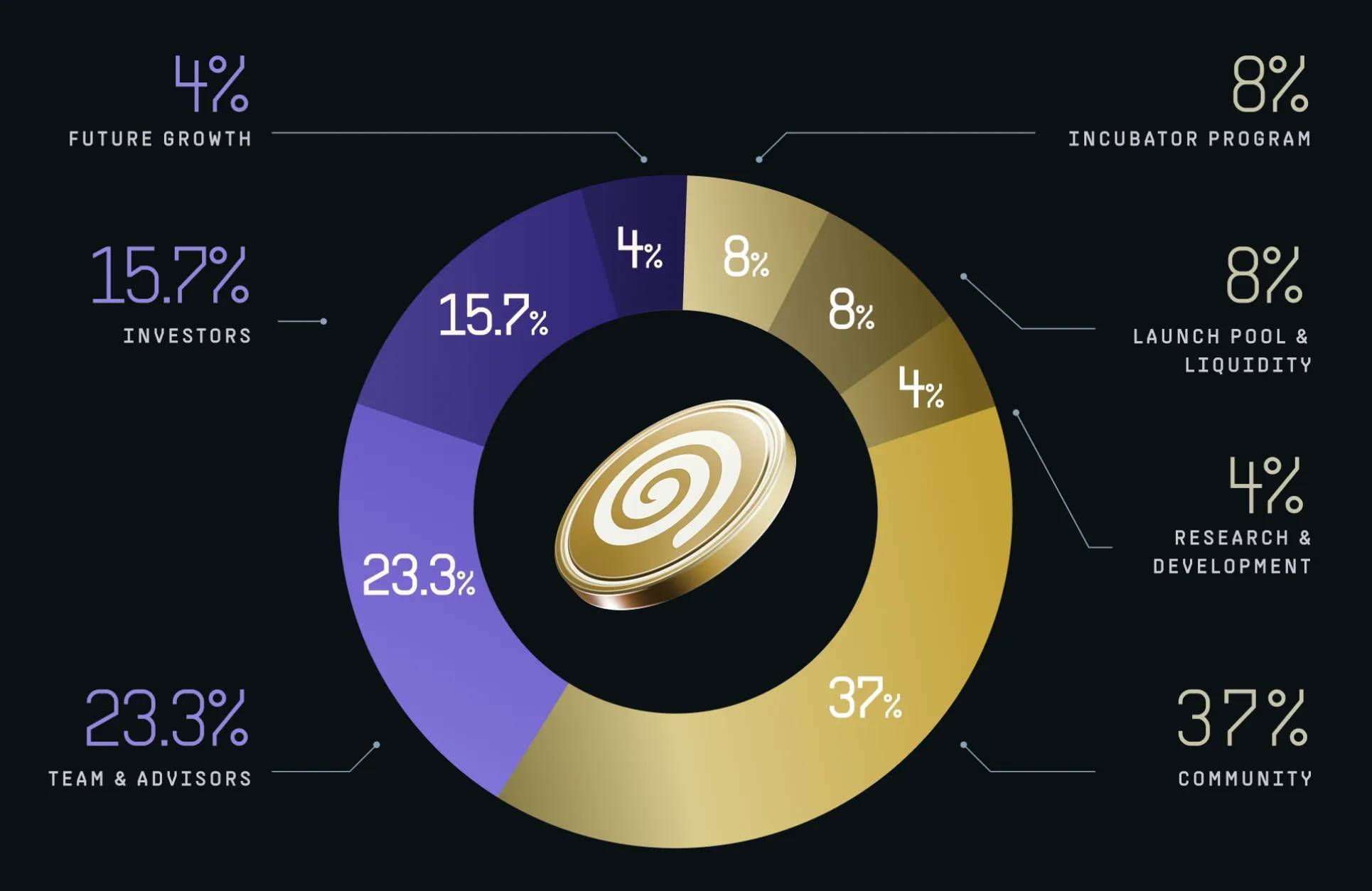
- Similarities and Differences with the Virtuals Model
Many people compare Portals with Virtuals, and this comparison is reasonable. Let’s understand the similarities and differences between the two through a detailed comparison:

From this comparison, it can be seen that while both projects adopt the "platform token + ecosystem token" model, there are significant differences in their specific implementation paths:
The advantage of Virtuals lies in lighter content forms and faster dissemination speeds. An interesting AI persona can quickly go viral on Twitter, and AI can interact with users 24/7, continuously generating content and topics.
The advantage of Portals lies in richer content forms and more diverse monetization methods. Games naturally have more economic scenarios: equipment, skins, land, items, etc., can all be tokenized, providing more real uses for tokens. Additionally, the immersion and playability of games may lead to higher user retention.
However, both projects share a common challenge: how to maintain content quality and user freshness. Virtuals needs to continuously upgrade AI capabilities, while Portals needs to consistently produce high-quality games. Both are exploring the possibilities of UGC (user-generated content) models in Web3, albeit with different content carriers.
From an investment perspective, Virtuals has already validated the model and proven market demand; Portals is just getting started but may have greater imaginative potential.
An Experiment Worth Watching
Portals represents a possibility for Web3 gaming:
Not simply moving traditional games onto the chain, but leveraging the characteristics of blockchain to create new game creation and economic models.
Whether it can become the "Roblox of Web3" remains to be seen, but this direction is worth exploring. Between the short-term speculation of Pump.fun and the closed ecosystems of traditional games, there may exist a sustainable middle path.
For creators, Portals offers a low-threshold, high-freedom creation platform; for players, there is a continuous stream of new content; for investors, this is a Web3 project with real products and revenue.
Of course, all beautiful visions need execution to validate them. The TGE of Portals is just the beginning; the real test lies in whether it can continuously attract quality creators, produce high-quality content, and form a positive cycle. Let’s give this experiment some time to see how far it can go.
免责声明:本文章仅代表作者个人观点,不代表本平台的立场和观点。本文章仅供信息分享,不构成对任何人的任何投资建议。用户与作者之间的任何争议,与本平台无关。如网页中刊载的文章或图片涉及侵权,请提供相关的权利证明和身份证明发送邮件到support@aicoin.com,本平台相关工作人员将会进行核查。




